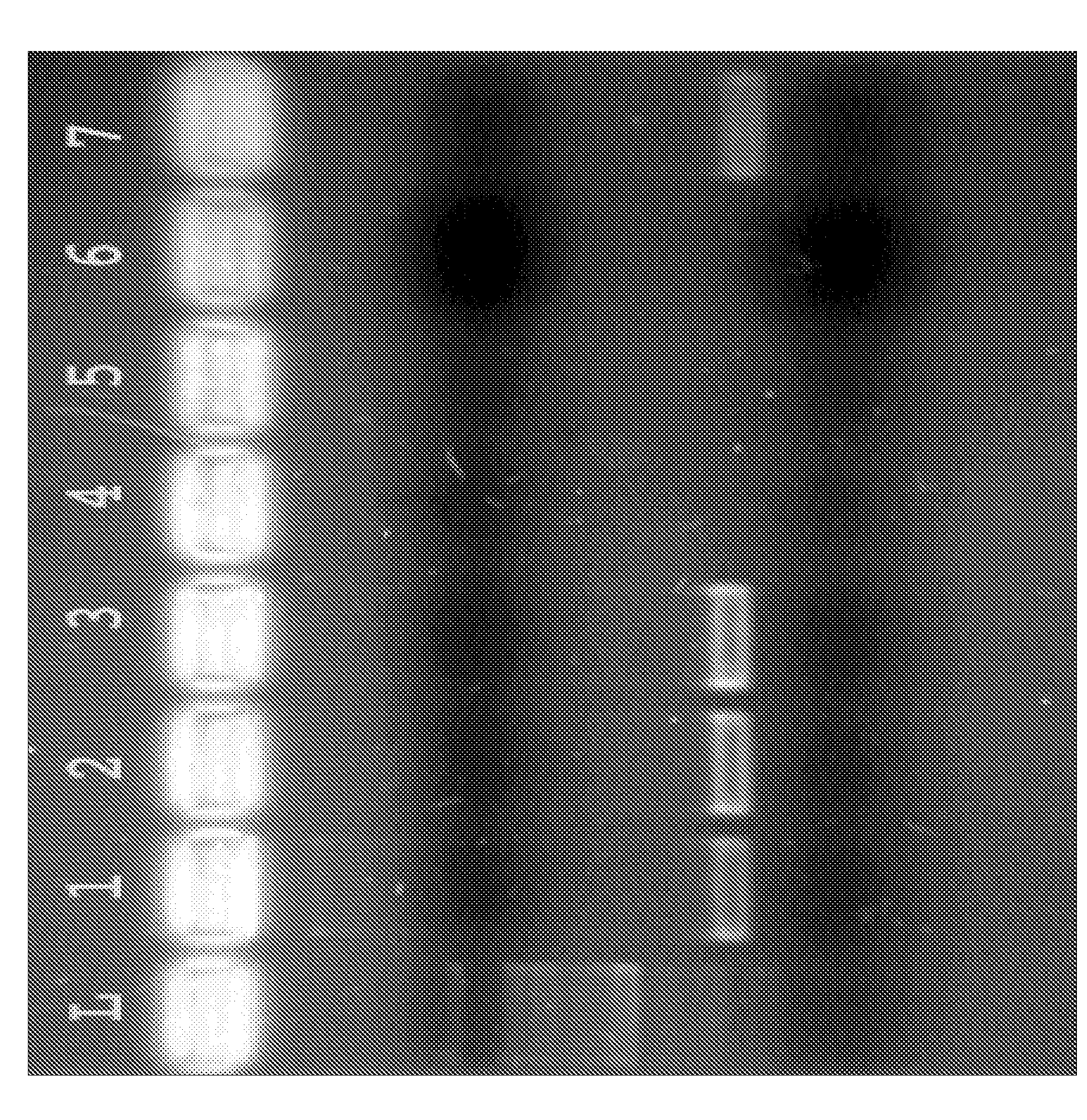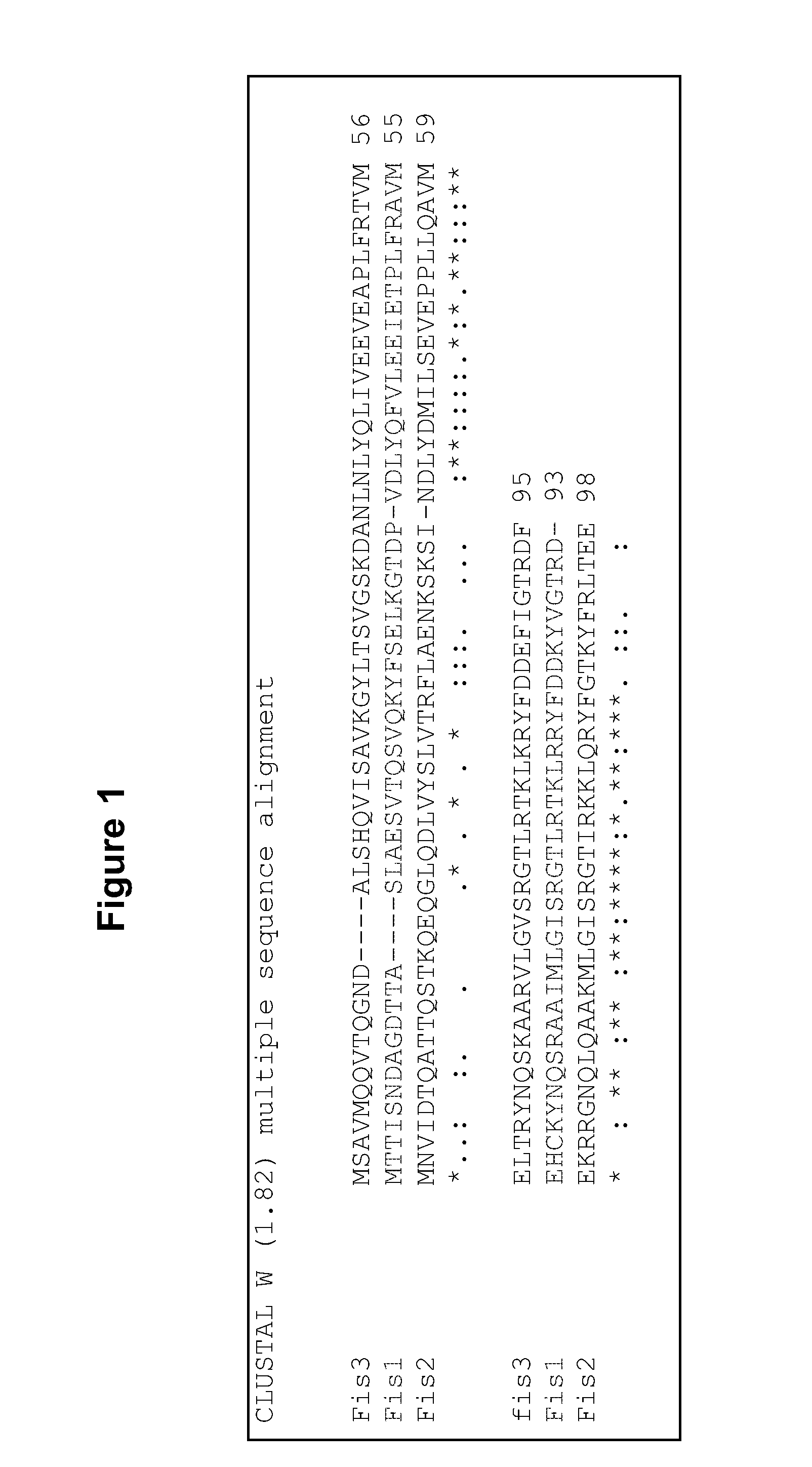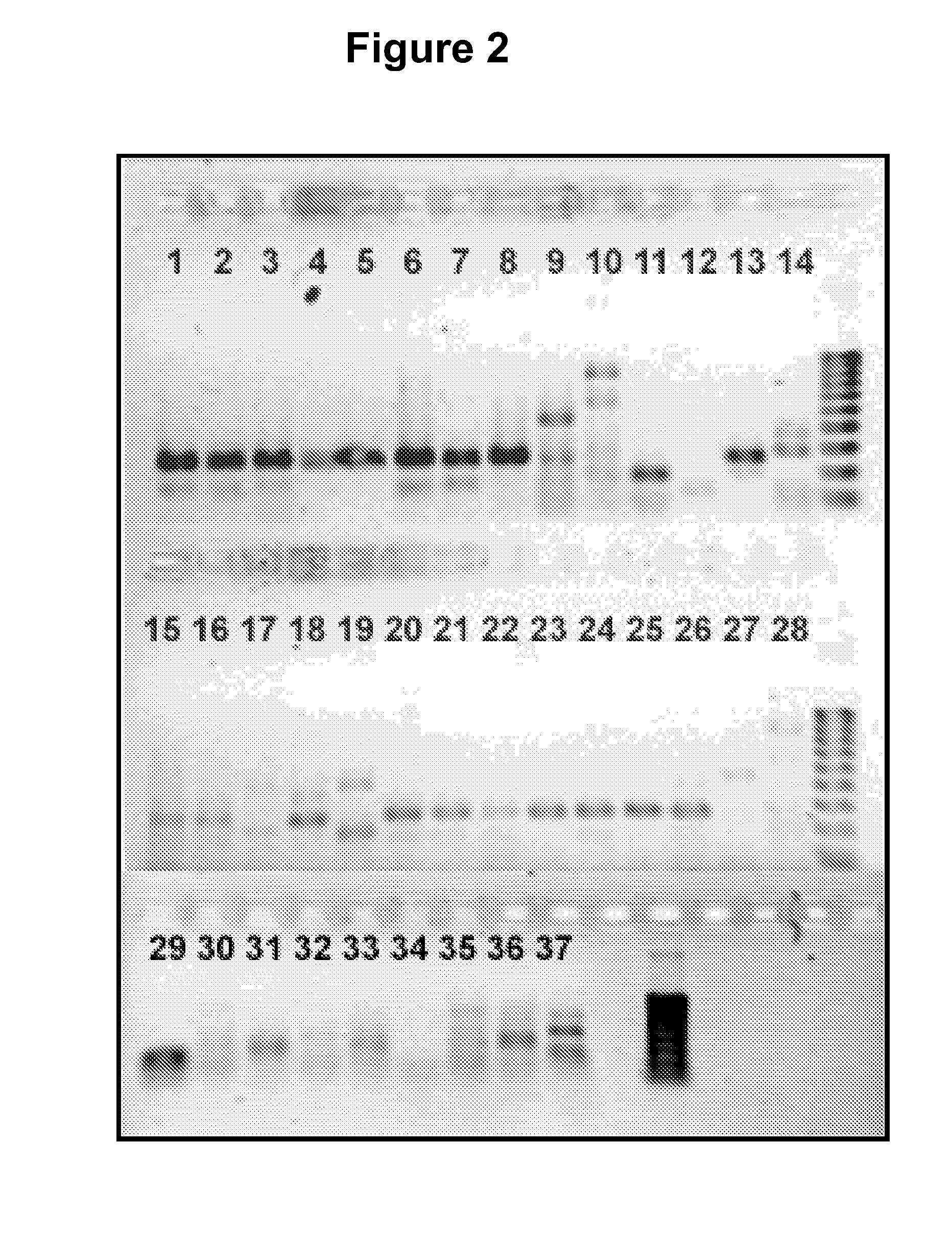Method for Specific Detection of Legionella Pneumophila
- Summary
- Abstract
- Description
- Claims
- Application Information
AI Technical Summary
Benefits of technology
Problems solved by technology
Method used
Image
Examples
examples
1. Material and Methods
[0125]1.1 Organisms Used in this Study and DNA Extraction
[0126]Fifteen serogroups of Legionella pneumophila were used to test the specificity of the primers and the Taqman probe used. In addition, a total of 30 different bacterial species belonging to all major phylogenetic lineages, including 11 species of Legionella spp., have been used as negative specificity controls.
1.2 DNA Extraction and Quantitation
[0127]DNA from clinical specimens was extracted by using the kit NucleoSpin Blood as specified by the manufacturer (Macherei-Nägel). DNA concentration was determined by the PicoGreen™ method (Moleculsr Probes) by comparing fluorescence values with those of a calibration curve built up from a dilution series of Salmon sperm DNA (Sigma chemicals).
1.3 Primer Design
[0128]Partial sequences of the gene fis1 from all serogroups of Legionella pneumophila were obtained and aligned, resulting to be identical. This fragment was then used to design two set of primers. Th...
PUM
| Property | Measurement | Unit |
|---|---|---|
| Fraction | aaaaa | aaaaa |
| Fraction | aaaaa | aaaaa |
Abstract
Description
Claims
Application Information
 Login to View More
Login to View More - R&D
- Intellectual Property
- Life Sciences
- Materials
- Tech Scout
- Unparalleled Data Quality
- Higher Quality Content
- 60% Fewer Hallucinations
Browse by: Latest US Patents, China's latest patents, Technical Efficacy Thesaurus, Application Domain, Technology Topic, Popular Technical Reports.
© 2025 PatSnap. All rights reserved.Legal|Privacy policy|Modern Slavery Act Transparency Statement|Sitemap|About US| Contact US: help@patsnap.com



